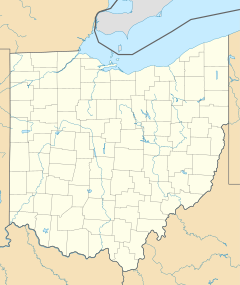
Venkateswara, also known as Venkatachalapati, Balaji and Srinivasa, is a Hindu deity, described as a form or avatar of the god Vishnu. He is the presiding deity of Venkateswara Temple, Tirupati. His consorts, Padmavathi and Bhudevi, are avatars of the goddess Lakshmi, the consort of Vishnu.

The Sun Temple of Modhera is a Hindu temple dedicated to the solar deity Surya located at Modhera village of Mehsana district, Gujarat, India. It is situated on the bank of the river Pushpavati. It was built after 1026-27 CE during the reign of Bhima I of the Chaulukya dynasty. No worship is offered now and it is a protected monument maintained by the Archaeological Survey of India. The temple complex has three components: Gūḍhamanḍapa, the shrine hall; Sabhamanḍapa, the assembly hall and Kunḍa, the reservoir. The halls have intricately carved exterior and pillars. The reservoir has steps to reach the bottom and numerous small shrines.

Ganesha is a prominent Hindu god. He is the god of beginnings, wisdom and luck and worshipped as the remover of obstacles. Ganesha is easily recognized from his elephant head. Devotion to Ganesha is widely diffused and extends to Jains and Buddhists and beyond India.

The Hindu Temple of Atlanta is located in Riverdale, Georgia, and serves the Metro Atlanta Hindu population. But, because of its proximity to the I-75, and its popularity, nearly 5-10% of the devotees are from the eastern seaboard, southern, and midwestern states. The temple is 9-miles away from the Hartsfield-Jackson International Airport terminal. It has been rated as one of the top 10 Hindu temples in the US.

Shri Mayureshwar Mandir or Shri Moreshwar Temple is a Hindu temple (mandir) dedicated to Ganesha, god of wisdom. It is located in Moragaon in Pune District, about 65 km away from Pune city in the Indian state of Maharashtra. The temple is the starting and ending point of a pilgrimage of eight revered Ganesha temples called Ashtavinayaka.
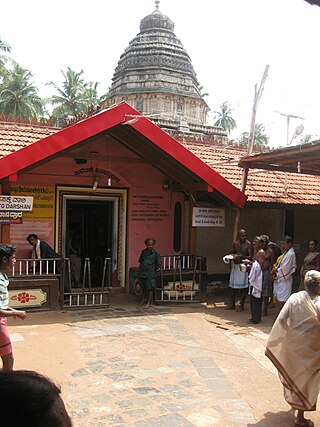
The Mahabaleshwar Temple, Gokarna is a 4th-century CE Hindu temple located in Gokarna, Uttara Kannada district, Karnataka state, India which is built in the classical Dravidian architectural style. It is a site of religious pilgrimage. The temple faces the Gokarna beach on the Arabian Sea. The temple deifies the Pranalinga also called Atmalinga or Shiva Linga In legend, it is said that the deity of the temple will bestow immense blessings to devotees, even to those who only glimpse it. Currently the administrative charge of the temple is with an Overseeing Committee under the Chairmanship of Justice BN Srikrishna, a Retired Justice of the Hon'ble Supreme Court of India. It is one of the 275 paadal petra sthalams expounded in the Tevaram, a sacred Tamil Shaivite text written during the 6th and 7th centuries by 63 saints called Nayanars.

Sri Radha Krishna-Chandra Temple is one of the largest Krishna-Hindu temples in the world. It is situated in Bangalore in the Indian state of Karnataka. The temple is dedicated to Hindu deities Radha Krishna and propagates monotheism as mentioned in Chandogya Upanishad.

The Siddhivinayak Temple of Siddhatek is a Hindu temple dedicated to Ganesha, the elephant-headed god of wisdom. The temple is one of the Ashtavinayaka, the eight revered shrines of Ganesha in the Indian state of Maharashtra and the only Ashtavinayaka shrine in Ahmednagar district.

The Vigneshwara Temple or Vighnahar Ganapati Temple of Ozar is a Hindu temple dedicated to Ganesha, the elephant-headed god of wisdom. The temple is one of the Ashtavinayaka, the eight revered shrines of Ganesha in Maharashtra, India. The Ganesha form worshipped here is called Vigneshwara or Vignahar and is associated with the legend of Ganesha defeating Vignasura, the demon of obstacles.

Bucesvara temple, also referred to as the Buceswara, Bucheshwara or Bhucheshvara temple, is a 12th-century Hindu temples in Koravangala village, Karnataka, India. The most sophisticated historical temple in the village, it is considered to be the flag-bearer of Hoysala architecture and was built by a wealthy patron named Buchi during the reign of king Ballala.
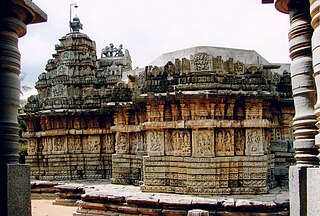
The Mallikarjuna temple, dedicated to the Hindu god Shiva, is in Basaralu, a small town in the Mandya district, Karnataka state, India. Basaralu is close to Nagamangala and about 65 km from the culturally important city of Mysore. The temple was built by Harihara Dhannayaka around 1234 A.D. during the rule of the Hoysala Empire King Vira Narasimha II. This temple is protected as a monument of national importance by the Archaeological Survey of India.
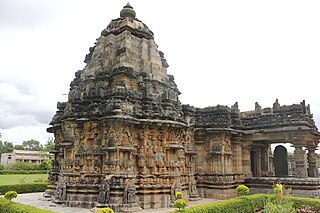
The Kalleshwara temple is located in the town of Hire Hadagali of the Hoovina Hadagalitaluk in Vijayanagara district of Karnataka state, India.

The Kalleshvara temple is located in the town of Ambali in Bellary district of Karnataka state, India. According to an Old Kannada inscription placed in the sabhamantapa, the temple was constructed during the reign of the Western Chalukya Empire King Vikramaditya VI. This temple is protected as a monument of national importance by the Archaeological Survey of India.

The Kaitabheshvara temple is located in the town of Kubatur, near Anavatti in the Shimoga district of Karnataka state, India. The temple was constructed during the reign of Hoysala King Vinayaditya around 1100 AD. The Hoysala ruling family was during this time a powerful feudatory of the imperial Western Chalukya Empire ruled by King Vikramaditya VI. According to the Archaeological Survey of India, the architectural signature of the temple is mainly "Chalukyan". Art historian Adam Hardy classifies the style involved in the construction of the temple as "Later Chalukya, non mainstream, far end of spectrum". The building material used is soapstone The temple is protected as a monument of national importance by the Archaeological Survey of India.
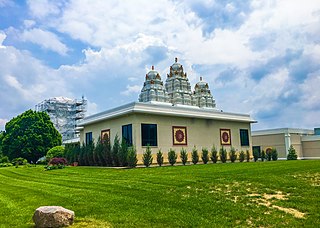
The Hindu Temple of Dayton is a Hindu temple in Beavercreek, Ohio. It opened in 1984, making it the oldest Hindu temple in the Dayton metropolitan area. It has shrines for the deities Venkateshwara, Rama and Sita, Lakshmana and Hanuman, Ganesha, and Radha Krishna.

The Sadasiva temple at Nuggehalli is a 13th-century Shiva temple with Hoysala architecture in Nuggehalli village, Hassan district, Karnataka, India. The temple is one of the best illustrations of the Hoysala era Nagara temple with the stellate style, remarkable for its octagonal star configuration with clean, simple aesthetics. The brilliant synthesis of South Indian ideas with North Indian architectural plan makes it a special monument. It is also notable for its artwork that depicts legends of Shaivism, Vaishnavism, Shaktism and Vedic deities together.

The Hindu Temple of Central Indiana is a Hindu temple in Indianapolis, Indiana. Opened in 2006, it is the oldest Hindu temple in Indiana. Local public TV station WFYI has called it "a breathtaking new monument - impressive in both scope and design, as well as a testament to the growing multiculturalism of the region." The Indianapolis Star says it is "an iconic structure that pays homage to various holy shrines across India."

The ISKCON Krishna House is a Hare Krishna temple in Columbus, Ohio. Established in 1969, it is the oldest Hindu temple in Ohio. Its significance has been recognized with an Ohio Historical Society marker.

The Jain Center of Central Ohio is a Jain temple in Lewis Center, Ohio. Opened in 2012, it is the first Jain temple in the Columbus metropolitan area. Its significance has been recognized with an Ohio Historical Society marker.

